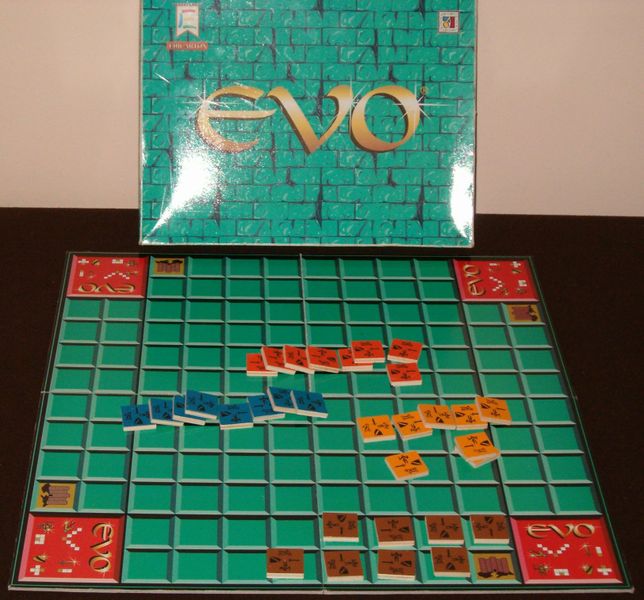Evo is an abstract strategy board game that was first released in in . Designed by Philippe Keyaerts, the game has players controlling a species of dinosaurs in a prehistoric world. The game has received praise for its unique theme and engaging gameplay, making it a favorite among strategy game enthusiasts.
Game Components of Evo Board Game
Main Game Board: Comprises two reversible sections, each with differently-sized halves of a prehistoric island, allowing four different assembly configurations.Hexes: The island is made up of hexes representing four different terrain types – desert, plains, hills, and mountains.Climate and Round Board: A separate board for tracking the current climate and round number.Scoring and Bidding Board: For marking players’ scores and bidding progress.Player Boards: Each player has a board to mark their dinosaur’s mutations.Dino Tokens: Tokens representing the players’ dinosaurs.Event Cards: Each player starts with three Event cards.Mutation Tokens: Tokens for various mutations such as *leg*, *tail*, *horn*, *fur*, and *parasol*.
How To Setup Evo Board Game
To set up Evo, players first assemble the main game board based on the number of players: small-small for three players, small-large or large-small for four players, and large-large for five players. Each player chooses a set of dino tokens and places one token on their starting hex. Players also set their scoring marker to “10” on the scoring board. Each player receives a player board showing a dinosaur with initial mutations (one egg, one leg, a tail, a horn-less face, one fur, and one parasol) and three Event cards.
Gameplay Mechanics and Game Objective
Initiative: The order of play is determined by the number of *tail* mutations, with ties resolved by population size and then by a six-sided die roll.Climate: A six-sided die roll determines the climate change, which can either follow a cycle or stay the same/unpredictably change.Movement and Combat: Players move their dinos based on the number of *leg* mutations; combat occurs if a dino moves into a space occupied by another, with *horn* mutations giving an advantage.Birth: Players can add new dinos based on the number of *egg* mutations.Survival and Mutation: Dinosaurs survive based on climate, terrain, and mutations; players score points for each surviving dino.Meteor and Evolution: Later turns introduce the possibility of a meteor strike ending the game; otherwise, players bid for new mutations using their score points.
Player Experience
Evo offers a dynamic and strategic gameplay experience, enhanced by the constantly changing climate, which shifts the balance of power frequently. Unlike many German-style board games, Evo initially allowed player elimination, but the new edition includes mechanisms to prevent this, keeping all players competitive throughout the game.
Pros
Dynamic Climate: Keeps the game unpredictable and challenging.Strategic Depth: Multiple phases and mutations require thoughtful planning.Replayability: Different board configurations and random climate changes ensure varied gameplay.Balanced Mechanics: Prevents dominant strategies and keeps all players in the game.
Cons
Complex Setup: Assembling the board and understanding all the mutations can be time-consuming.Learning Curve: New players may find the rules and various phases overwhelming at first.Lengthy Gameplay: The game can take up to 2 hours to complete.
Personal Thoughts on Evo Board Game
Evo is perfect for those who enjoy strategic games with a strong thematic element. It’s ideal for players who appreciate the complexity of adapting to changing conditions and managing resources (in this case, dinosaur mutations). The game’s mechanics make it suitable for players aged 12 and above who are looking for a challenging yet engaging board game experience.
We are supported by our audience. When you purchase through links on our site, we may earn an affiliate commission, at no extra cost for you. Learn more.

